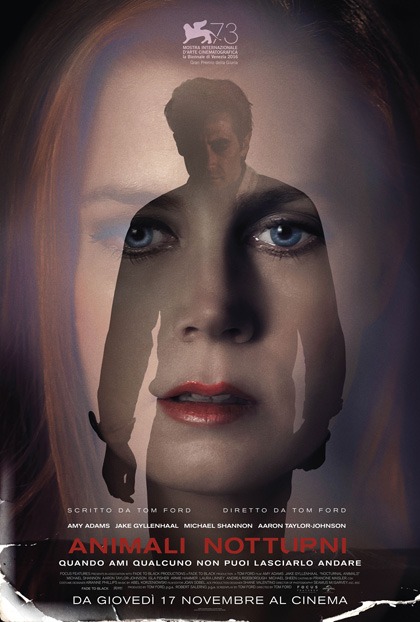Tom Ford, the fashion creative who now also has a home in the cinema, creates a reflection capable of standing without ifs and buts. Second film, almost reached maturity, Nocturnal animals, Nocturnal Animals, two-dimensional world both material and spiritual, is a comparison between being in potentiality and being in act, between reality and utopia, between strength and weakness in the animal world of humans that Ford never makes us forget . Since the first visions of the glossy world of art in which we are thrown.
The Film won the Grand Jury Prize in Venice 73. Distribution Universal Pictures.
The story of Nocturnal Animals
In the inversion of the falsely redeemed beauty, we immediately run into Susan alias Amy Adams, a successful gallery owner from Los Angeles and in the environmental dynamics of a caste of privileged rulers, of which Ford mercilessly sketches out somewhat stereotyped revelations that do not interfere too much in our attention. Susan is not happy, and she is ashamed of it, given her condition: she does not sleep well, she feels all the emptiness that the ambitions of a structured and planned life in cynical success (giving up becoming a creative herself) have not been able to eliminate. . In the restorative weekend that she would like to grant to her wedding that she is getting out of hand, she receives a writing by post: a novel, Nocturnal Animals, of her first husband, Edward. The woman begins to read it in the sleepless nights and her reading becomes ours, living with her the story of a wealthy family that comes across on the road to the Texas desert in the nocturnal men of a low humanity, vulgar, dominating-avenging of the ‘superiors beings that cross it. The protagonist of the novel is a man devoid of malice, brandable as weak in the cynical and animal world of man: he will suffer all his condition without ransom … Susan savors in reading her youth, her utopian faith in a future that she believed she could build far away from the cold bourgeoisie he was trying to escape from, the pure love of sensitivity, Edward’s apparent frailty. But the strong caste is subconsciously Susan’s homeland: her love for Edward lasts as long as she realizes that she is not a ‘weak one’.
Ford’s film review
Notturnis animals it becomes clear and glaring in Susan’s eyes and in ours: an examination of conscience that will not save her from the abandonment to the void to which she is now destined. Ford excellently blends a narrative without detachment, which combines the different social, environmental and emotional dimensions in the perspectives of space and time of the unicum of a place, the world, and of a nature, ours, always and only dictated by animal laws. Too bad that Ford visually slips into glossy staging that betrays his condition of being ‘strong’, detached from what he shows, unbalancing the eye.
Note on the absolute singularity of the actor’s performance for Micheal Shannon, unforgettable animal policeman at the end of his life due to cancer. His gestures and his jokes sketch with talent a character of human truth and indisputable personality.
Review from Venice 73

